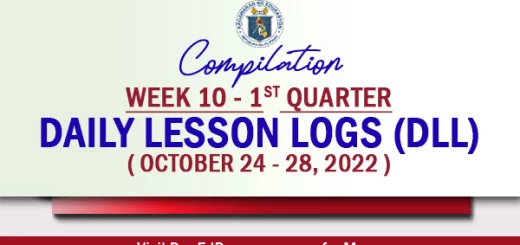Activity Sheets for Students – K to 12 Workbooks
You will find the links for the Activity Sheets for Students – K to 12 Workbooks after the article below. You may read the following article or you may scroll down directly for the links.
Credits to all the owners and file creators.
Type of instructional materials:
Before a teacher can design or produce an instructional material, activity Sheets for Students, she has to know what these instructional materials are, their advantage and disadvantage, characteristics and limitations etc. Therefore, some types of instructional materials could be outlined as thus- Graphic materials, Three- dimensional materials, still pictures,
still projected pictures, motion pictures and Audio materials etc.
Graphic materials: – This represent these charts, graphic, posters and diagrams, cartoons, comics, maps and globes which we draw on a cardboard paper or on a piece of cloth and present to our learners to help them visualize what we have been laboring so hard o explain verbally. Graphic materials belong to the finally of two- dimensional material and proportional relationships that may exist among variables in a phenomenon. Graphic materials are used to compress information, to focus and captivate attention, to vary stimuli presented and as an aid to recall. Graphic materials when properly produced can help in attaining all processes in the information processing model of learning as well as serve as avenue for applying principles from other learning theories.
Three – Dimensional Materials:- They are different from charts and graphs which are illustration of two- dimensional materials because of the incorporation of a third element- department. Thus, whereas graphs and charts embrace the width and height of a visualized object, a three-dimensional embraces this third element department, a feature that
makes the three- dimensional material a replica of the real thing. Different types of three-dimensional materials exist, namely: Models and mock-ups, realia, specimen, kits and dioramas-which is the creation of a scene in an event.
Still pictures:- This refers to flat opaque pictures which we take during festivals or when we are commemorating an event. They also refer to pictures we fined in journals and magazines. They are called still pictures because in admiring them, we hold them in our hands or place them on a surface, which is we do not view them with the aid of projector, as is the case with motion pictures or still projected pictures. Like graphic materials, still pictures belong to the group of two -dimensional materials.
Still projected pictures:- Still projected pictures is a class of instructional materials which our learners may not be familiar with. Therefore in order to assist then to better understand what is meant by still projected pictures, is the negative format. Still projected pictures can be projected with a projector. The projector has powerful electronic bulbs, which throw light on to the image on the negative, and image is finally projected on to a screen or wall. Therefore, when dealing with still projected pictures, one is automatically dealing with a whole range of materials (such as slides, overhead transparency, filmstrip etc) whose image are imprinted in a negative/film and which has to be projected using different types of projector. A major characteristics is still projected pictures is that the images are projected one frame at a time. This is a major difference between still projected pictures and motion pictures. This characteristic enables a still projected picture to stay for as long as a learner wants it on a screen.
Motion pictures:- Motion pictures are distinct from the other types of pictures because of the speed at which they areprojected. It is this speed of projection that intact gives the impression of motion. Motion pictures range from the 8 mm standard format to 8 mm supper and finally to the 16 mm format. The width of the film thus constitutes a basic for classifying them. Motion pictures films have sprocket holes along both edges or along only one edge. The presence of sprocket holes facilitates projection. Motion pictures can be projected at 16 or 24fps (frame per second.) They can be silent or accompanied with sound. Sound films use either a magnetic tape or optical sound track for sound recording. If a film is sound, only one edge bears the sprocket holes while the other edge bears the sound components.
Audio Materials:- This is a class name for tape recordings and discs. A disc or record as it is popularly called here is a round and flat acetate containing grooves, which produces sound vibrations through the action of a needled. Discs usually come in different sizes and play at different speeds.

Activity Sheets for Students – K to 12 Workbooks
MATH Activity Sheets for Students
- Adding Figures_v1
- Adding Figures_v2
- Adding Numbers_v1
- Adding Numbers_v2
- Addition Coloring Sheets_v1
- Addition Coloring Sheets_v2
- Mixed Addition & Subtraction
- Multiplication Coloring Sheets
- Multiplying Numbers
- Subtracting Figures
- Subtracting Numbers
- Subtraction Coloring Sheets
ARTS Activity Sheets for Students
- Crafts from CD
- Creative Arts
- DIY Gift Box Ideas
- Dot to Dot Worksheets
- Duck Coloring Pages
- Flower Crafts
- How to Draw Circle Animals
- Learn to Draw
- Popsicle Stick Crafts
- Tracer Pages
COLORING SHEETS Workbooks for Students
K to 12 Workbooks for Students
ENGLISH Workbooks for Students
- Grade 1 Workbook on English
- Grade 2 Workbook on English
- Grade 3 Workbook on English
- Grade 4 Workbook on English
- Grade 5 Workbook on English
- Grade 6 Workbook on English
FILIPINO Workbooks for Students
GRAMMAR Practice Workbooks for Students
- Grammar Practice Book for Grade 1
- Grammar Practice Book for Grade 2
- Grammar Practice Book for Grade 3
- Grammar Practice Book for Grade 4
- Grammar Practice Book for Grade 5
- Grammar Practice Book for Grade 6
- Grammar Practice Book for Grade 7
- Grammar Practice Book for Grade 8
- Grammar Practice Book for Grade 9
- Grammar Practice Book for Grade 10
HANDWRITING Practice Workbooks for Students
- Cursive Handwriting from A-Z Workbook
- Early Writing for Little Hands Workbook
- Handwriting Practice Workbook for beginners
- Handwriting Workbook for Grade 3
MATHEMATICS Workbooks for Students
SCIENCE Workbooks for Students
MORE FREE TO DOWNLOAD FILES HERE
Budget of Work | Bulletin Board Display | Curriculum Guide | Daily Lesson Log | DepEd Announcements | DepEd Memo | DepEd News | DepEd Official Statements | DepEd Order | DepEd Press Releases | Designs and Templates | Detailed Lesson Plan | Diagnostic Test | Download Files Here | Exams | Forms | Graduation | Instructional Materials | Latest News | Latest! | Learners Material | Periodical Tests | Powerpoint Presentations | Reviewers | RPMS | School Forms | Summative Test | Teachers Guide | Teachers Manuals | Teachers Tools | Weekly Daily Lesson Log | Workbooks
These daily lesson log were made in compliance with the Department of Education format.
DepEd Resources credits these files to all the owners and authors as well as those who sent us this files for posting. We will always be thankful of you. You make DepEd Resources possible for our beloved teachers .
Please LIKE and SHARE so everyone would benefit from these files. Thank you!
LIKE US on Facebook! Click Here.
“I cannot do all the good that the world needs. But the world needs all the good that I can do.”
―
















thank you sa tulong naibigay nyo sa mga guro na tulad ko!
Can I I have a copy of your files
thank u malaking tulong po ito at lessen na sa time ng pagsulat. just prepare nalng po ng IMs.
K12 po activity sheet po answer key
paano po aq makaka download nito
Pwd po s fb account q n lng by messanger n lng po salamat